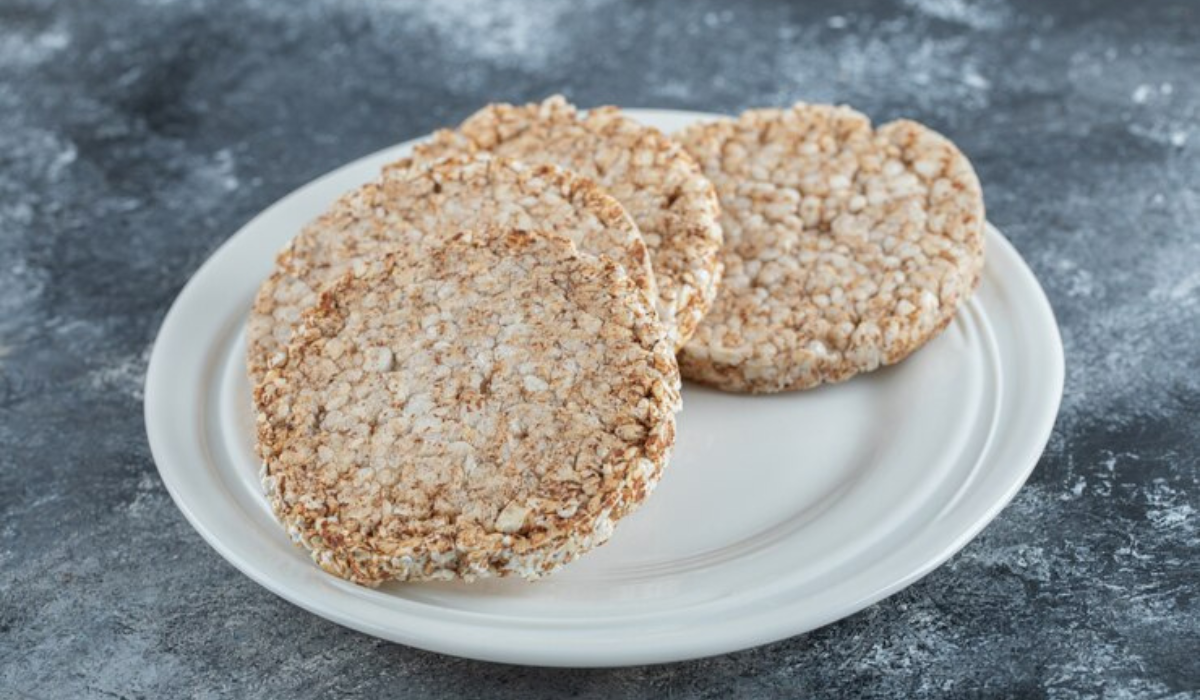Nutritional Profile of Rice Cakes
Rice cakes, often hailed as a healthier snack option, boast a simple nutritional profile that aligns with various dietary needs. Predominantly made from puffed rice, these light, airy snacks are low in calories, making them an ideal choice for those monitoring their calorie intake.
A closer look at the nutritional content of rice cakes reveals that they are primarily a source of carbohydrates, with a minimal presence of proteins and fats. This composition positions rice cakes as a quick energy source, suitable for people needing a fast, light snack. However, it’s important to note that due to their high glycemic index, rice cakes can cause a rapid spike in blood sugar levels. Hence, they are best consumed in moderation, particularly by individuals with specific dietary concerns like diabetes.
Despite their simplicity, rice cakes offer a degree of nutritional versatility. They often serve as a gluten-free alternative to bread and other wheat-based snacks, making them a safe option for those with gluten intolerance or celiac disease. Additionally, being naturally low in sodium and free from cholesterol, rice cakes align with heart-healthy eating patterns.
For those looking to enrich the nutritional value of rice cakes, pairing them with protein-rich or fiber-filled toppings like peanut butter, hummus, or fresh fruits and vegetables can transform them into a more balanced snack or meal component.
In summary, rice cakes provide a straightforward, diet-friendly snack option. Their low calorie and carbohydrate-centric composition cater well to quick energy needs, while their compatibility with various toppings allows for nutritional enhancement. As with any food, enjoying rice cakes as part of a diverse and balanced diet is key to maximizing their health benefits.
Health Benefits of Rice Cakes
Rice cakes, a staple in health-conscious diets, offer several benefits that cater to various wellness goals. Their low-calorie nature makes them an excellent choice for weight management. By providing a feeling of fullness without a significant calorie load, rice cakes help curb overeating, aiding those aiming to lose or maintain weight.
Beyond weight management, rice cakes serve as a valuable dietary component for digestive health. Their light and airy texture makes them easy to digest, offering a suitable snacking option for those with sensitive stomachs or individuals recovering from gastrointestinal discomfort.
For cardiovascular health, rice cakes are a smart inclusion. Being naturally low in fat and cholesterol-free, they align with heart-healthy eating practices. Incorporating them into your diet can support cardiovascular wellness, especially when combined with other nutrient-rich foods.
Rice cakes also offer versatility for those with dietary restrictions. As a gluten-free snack, they provide a safe alternative for individuals with gluten intolerance or celiac disease. Moreover, their simple composition makes them a fitting choice for vegan and vegetarian diets, further broadening their appeal.
It’s important to remember, however, that the nutritional value of rice cakes can be enhanced significantly with the right toppings. Pairing them with sources of protein, healthy fats, and fiber, such as nut butters, avocado, or fresh fruits, can transform them into a more nutritionally balanced snack.
In essence, rice cakes stand out as a beneficial snack choice for various health goals. Their adaptability in terms of toppings and suitability for different dietary needs add to their appeal as a nutritious and convenient food option. Whether you’re looking to manage your weight, support digestive health, or find a heart-healthy snack, rice cakes offer a versatile and wholesome solution.
Rice Cakes in Cuisine
Rice cakes have carved a niche for themselves in the culinary world, celebrated for their versatility and adaptability across various cuisines. Their neutral flavor and satisfying crunch make them an ideal canvas for a spectrum of culinary creations, from simple snacks to elaborate dishes.
Innovative chefs and home cooks alike have embraced rice cakes as a base for both savory and sweet toppings. Their ability to pair well with a wide range of ingredients, from creamy spreads to fresh fruits, opens up endless possibilities for creative recipes. For a quick, nutritious snack, spreading almond butter on rice cakes or topping them with sliced avocado offers a delightful combination of textures and flavors. For those with a sweet tooth, drizzling rice cakes with honey and sprinkling them with cinnamon or berries creates a guilt-free treat.
Rice cakes also feature prominently in traditional dishes around the world. In Korean cuisine, ‘tteokbokki’, a popular street food, uses chewy rice cakes in a spicy, savory sauce. In Japan, ‘senbei’ rice crackers are enjoyed as a crunchy, often flavored snack. These cultural variations showcase the global appeal of rice cakes and their capacity to merge into different culinary traditions.
Moreover, rice cakes have become a go-to ingredient for health-conscious individuals and those with dietary restrictions. Their gluten-free nature makes them a popular alternative to bread and crackers in various recipes, from open-faced sandwiches to canapés.
In summary, rice cakes offer a unique culinary experience, blending seamlessly into both modern and traditional recipes. Their simplicity is their strength, providing a foundation for flavors ranging from the bold and spicy to the sweet and subtle. Whether incorporated into cultural dishes or used as a base for innovative snacks, rice cakes continue to be a versatile and beloved component in kitchens worldwide.
Dietary Considerations for Rice Cakes
Rice cakes, a popular snack among health-conscious individuals, fit seamlessly into various dietary plans, catering to diverse nutritional needs and preferences. Their gluten-free nature makes them an excellent choice for those with gluten sensitivities or celiac disease, providing a safe and enjoyable alternative to wheat-based products.
In vegan and vegetarian diets, rice cakes serve as a versatile staple. Free from animal products, they offer a simple, plant-based snack option that can easily be dressed up with vegan toppings like hummus, avocado, or plant-based spreads. This adaptability makes rice cakes a favored choice for those following plant-based diets, ensuring they don’t miss out on flavor or variety.
Allergy concerns are another important consideration with rice cakes. While they are naturally free from common allergens like gluten, nuts, and dairy, it’s crucial to check the labels for potential cross-contamination if you have specific allergies. Some flavored varieties may contain added ingredients that could trigger allergic reactions, making it essential to stay informed about the products you choose.
For those managing diabetes or watching their glycemic index, it’s important to be mindful of the carbohydrate content in rice cakes. While they are low in calories, rice cakes have a high glycemic index, which means they can cause a rapid spike in blood sugar levels. Balancing them with low-glycemic toppings like cheese, nut butter, or vegetables can help mitigate this effect.
In summary, rice cakes are a flexible snack that aligns well with a range of dietary needs. Their gluten-free, vegan-friendly nature makes them suitable for various lifestyles, while their simple composition allows for easy customization to suit individual dietary requirements. Whether you’re looking for a light snack or a base for more substantial toppings, rice cakes offer a practical and enjoyable solution in the realm of dietary considerations.


3 thoughts on “Rice Cakes: Health Benefits, Recipes, and Global Varietie”
Comments are closed.